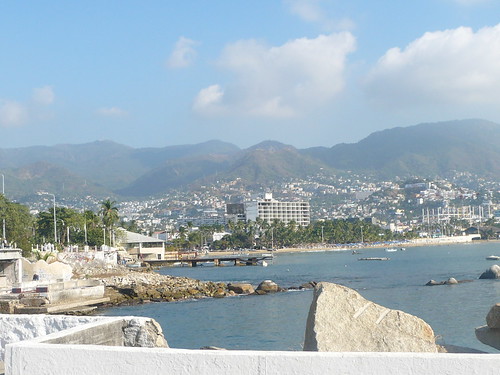Acapulco cut off by Cat-5 Hurricane Otis which caught forecasters by surprise
Acapulco #Acapulco

A “nightmare scenario” struck shortly after midnight in the coastal city of Acapulco on Wednesday.
Hurricane Otis roared ashore in southern Mexico, the strongest-ever storm to make landfall on the country’s west coast.
The hurricane underwent explosive intensification from a Category 1 to Category 5 in just 12 hours in the Eastern Pacific Ocean, catching forecasters by surprise. The National Hurricane Center (NHC) described it as a “nightmare scenario” for the region.
The storm made landfall with 165mph winds and torrential rain of up to 15 inches in places.
“There are no hurricanes on record even close to this intensity for this part of Mexico,” read one NHC update, late on Tuesday, as a flurry of alerts were issued.
The scale of the damage was only beginning to emerge at daylight broke on Wednesday in Acapulco, a once glittering vacation resort which attracted Fifties film stars, but has fallen prey to cartel violence in recent years.
Around one million people live there, in both luxury homes and hillside slums, sandwiches between the mountains and the Pacific. On Wednesday, all were essentially cut off by landslides and flooding. Hundreds of thousands were without power and cell phone service.
Videos from the scene showed a shopping mall stripped back to its frame, hotels with collapsed ceilings, and downed palm trees.
The potential death toll is unknown.
A major highway was covered in sheets of earth. “There is no alternate route, take precautions, “ said the Secretary of Infrastructure, Communications and Transportation in the state of Guerrero.
Dozens of families were forced to climb over tree trunks and other debris to escape mountain villages, The Associated Press reported dotted between the popular resorts of Acapulco and Zihuatanejo.
Soon after the hurricane, a 4.4-magnitude earthquake was detected in Zihuatanejo.
Mexican President Andrés Manuel López Obrador said that rescue efforts and repair convoys were being hampered by the lack of access. Roads were covered in debris and bridges had collapsed in places.
Flights had been grounded and officials were struggling to access the area as the local military airport had also sustained damaged.
The storm moved inland on Wednesday bringing powerful winds and heavy rains across the states of Guerrero and Oaxaca. Otis is expected to begin to dissipate when it slams into Mexico’s mountain range later tonight.
While it is still too early to say what impact the climate crisis had on this individual weather event, record-breaking ocean temperatures are fuelling stronger and more destructive cyclones in general.
Heat in the ocean supercharges hurricanes with more moisture and stronger winds. This heat is being caused by a fossil-fuel driven climate crisis with El Nino, a cyclical weather pattern, layered on top.